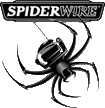Hey Everybody,
Sorry for the delay. This is a rough draft but they are my notes. There’s actually two pieces. Thanks for coming to the seminar and see you in March!
Sightfishing for redfish seminar.
Tonight’s topic is sightfishing for redfish.
Looking forward to this seminar. Sightfishing is exactly what is says, Fishing from sight. Much more goes into this technique though besides seeing and casting. Sightfishing is performed in 1′ of water to about 3′ of water. Bay boats with drafts of less than 14″ or so are fine.
Rods and reel
Light to medium action rod able to make long, accurate casts. Spinning or baitcaster is fine. Generally, spinning tackle will allow better distance and accuracy. Reels with 8-12 pd test mono or 10-20 braid. 10-20 pound fluorocarbon leaders 30-40″ long. Try not to use a swivel. A line to leader knot will increase success.
Bait
Livebait is possible but difficult in sightfishing. Gold spoons, Gulp Shrimp, crabs and jerkbaits, spinnerbaits, crankbaits, suspending plugs. Topwater is not recommended but can be used while blindcasting. Also, anything that a bass will eat, a redfish will eat, including plastic worms.
My favorite baits in this area(Pensacola):
1. 3 inch Gulp Shrimp or Crab on a flutterhook or Gamakatsu 1/16 oz lead.
2. 1/8 Johnson Gold spoons
3. Gulp 5″ Jerkbaits on flutterhook or 1/16 or 1/8 oz.
Areas to sightfish for redfish in our area:
Any shallow flats or bank will hold redfish. Areas that contain oyster bar or shells, sawgrass, black root systems on the bank, dark muddy bottoms, sand bottoms and grass bottom will all have redfish. All the above in one section is the best.
North Escambia Bay, Garcon point, East Bay, Big Lagoon, North Santa Rosa Sound are great places to sightfish for redfish.
Things to look for when sightfishing:
- Clear water- redfish love clear water. You can see the fish much easier and you can identify bottom conture and vegetation. Also bait will be easier to see.
- Water movement- incoming and outgoing flow is important. Redfish like a little water movement like most fish and they feed better.
- Look for bait (particularly mullet)- When I am looking for redfish, if I don’t see mullet of any size, I leave. Redfish hang with mullet, often in the same schools, below or behind. In very shallow water, when the sun is not high enough, mullet will be visible on the surface and look for small shrimp and crabs in the shallows. This means redfish are near.
- Look for different bottom structure and color. Potholes, roots, oysters, sand holes are great areas to see redfish.
- Look for tails. Not a lot in Pcola. But sometimes you will see redfish tailing. Tailing means the fish is eating and it’s tail will be visible on the surface. Look for redfish rolling shining on the bottom. This means they are hungry and eating. Great time to make a cast.
How to sightfish:
Sightfishing is a technique where the angler has the opportunity to see the fish and make a proper presentation to the fish to make it eat on artificial. Sightfishing is very challenge and is not for everyone. Redfish can be very difficult at times. Overall, they are pretty cooperative in our area. They do not get hassled very much, YET. In my experience, the further west you go, the more cooperative the redfish. The further east and south you go, it becomes pretty difficult. This has to do with fishing pressure. We are about in the middle. You still have to be quiet but you can afford to make a few mistakes. I will try to help you make no mistakes.
1.In sightfishing you need sun, elevation and patience. Starting out at 530am is not necessary although you make encounter tails and wakes that early. Seeing fish begins when the sun is up. Try to work with the wind with the sun at your back. This is optimal sightfishing conditions and position your boat accordingly.
2.Check the tides and wind direction. Extreme low tide or extreme high tide can make fishing tough. Mid tides with water moving is the best. Winds are also important. Depending on wind speed you can fish windward banks or wind protected banks. I prefer protected banks since the chop is small to none. Often times the wind will push the bait and redfish against a bank or cove and you will find them there or in a nearby pocket.
3.Do not wake your banks to fish. Come in perpendicular to your area if possible. Stop well before your point to start fishing. Approach quietly with a trolling motor or pole. Use your trolling motor at low speed and at a constant. This keeps the same pitch underwater and will help not to spook your redfish. Push poling is the best technique. Stealth is the key.
4.Turn off baitwells, radio, cell phone, GPS, take off your squeaky shoes, do not talk and turn off your bottom finder. Those things make a racket underwater and will announce your presence everytime. Besides, you can see the bottom. It’s only 1′ to 3′ deep in most cases.
5.Try to get up high. A poling platform or bow platform is great. A cooler and stepping stool work the same. The higher you are the more fish you see. Wear polarized sunglasses to take the glare off the water.
6. Have an organized boat. Make sure all clutter is off the deck. Anything that can make noise should be stowed(extra rods, anchors, cans, tackle boxes)
Presenting Baits to Redfish:
- When a redfish is spotted, take a moment to observe the behavior of the fish. Sitting, moving and feeding. A well placed cast is the key to success. Low casts will minimalize water splash. Cast to where the fish is heading or pointing.
- If you see the fish late, let the fish swim away from the boat and then make a cast.
- If the fish changes direction or paths during your cast or presentation, do not retrieve your bait. Have another rod ready to make another cast at that fish. (Not legal is tourneys)
- A single spooked fish will not eat. Better chances with a school of fish. If a single spooks, concentrate on the area around where that fish was viewed because more fish will be around.
- Try to hold position with a Power-pole or anchor when a group of redfish is spotted. Allowing the wind or current to run over the fish will spook them every time.
Blindcasting:
I leave no detail overlooked when blindcasting and sightfishing for redfish. Meticulous preparation and research. I believe this dramatically increases my odds at catching good numbers of redfish.
Areas:
Summer/early Fall- Santa Rosa Sound on the north side. Between broken down docks. High tide closer to the bank and on low tide off the bank from the middle to the end of the docks.
– Southside of sound near Opal Beach and grass flats in the surrounding areas.
– Big Lagoon- on the south around Redfish Pt. and behind Ft. McRae in the no-motor pond.
– Late fall/winter- Northern bay systems of Escambia, Blackwater and East. These are the best redfish habitats in our area. Great on low tides.
- Look for large schools of larger mullet which disturb the bottom. Redfish will follow the mullet and look for shrimp and crabs kicked up by these mullet.
- Average depths are between 1-3 feet of water.
- Approach your area very quietly shutting off your large engine well ahead of your destination. No noise inside boat, turn off baitwell, bottomfinder and secure lose cans and everything that may hit the deck. Walk quietly and off the hatches. The noise is amplified 100x’s underwater and will alert fish within 500 yds of your presence.
- Try to set up with the wind and sun. Less bow slap and better ability to see redfish and mullet. Casting with the wind will produce larger casts and, in turn, more redfish.
- Top artificial baits including Gulp 5†Jerkshads, Gulp 3″ Shrimp in any color, Zoom 4†Baby Bass, slow rolled Johnson Gold Spoons in 1/8-1/4oz., Mirrodine 17-MR #18 and #21 with green and black backs, sometimes small inline spinnerbaits slowly rolled as well.
- Not much action with topwater or hard subsurface plugs. If you do want to use topwater, small Skitterwalks are my choice. Work them slowly(slower than for trout.)
- Long 10-20# fluorocarbon leaders connected directly to my mainline. I like leaders between 3-4.5 feet long. The farther away from the braid or mono the better. Often times the braid is actually out of the water in shallow water.
- Sharp hooks on weedless hooks, jigheads, spoons and other baits. Carry a hook sharpener
- Drifting or slowing trolling motoring is the best technique. Casting inside and outside schools of mullet. Also casting to sand holes, sawgrass banks, creek mouths and areas with known mud bottom are great ideas.
- Often times these redfish will gather in similar areas and a pattern can be discovered. 20 feet off the bank, points, right on the sawgrass on high tide, 100 feet of the bank on low tides
- When a redfish is seen or hooked, deploy your Power-Pole to keep you off a potential school and to effective fight your fish. It is also a great tool to stakeout on a point, creek mouth or proven productive area especially in the wind and heavy current.
Where I sightfish:
1. Sound, upper bays, East Bay, Blackwater, Escambia Bay. West Bay and Choctawhatchee(Hogtown) are also excellent for traveling anglers. Talk about spring, summer, fall and winter.
- Once you have found areas that have lots of redfish, you can get a little more fancy by sightfishing these redfish. Again, quietly and methodically. Take your time. Very slow trolling is fine but pushpoling is the best and most successful method.
- Elevation, clear water, good polarized sunglasses, sunlight and accurate casting is the key. Wear light colored clothing, light blue, white, gray. Never orange or red. They can see you!!
- Try to key in on leeward or wind protected banks, ponds, etc. The fish are easier to see and redfish tend to like slick and calm banks.
- In low conditions and early morning hours, I am looking to disturbance on the water in forms of tailing fish, waking fish and feeding fish. Mullet will also cause disturbance and always cast into mullet. Mullet and redfish tailing and wakes are very different.
- In sunny and high light conditions, I am actually looking for fish.
- Again, wind and sun to your back. Look as far as possible and try to see the fish before he sees you.
- Best baits for sightfishing include Gulp shrimp and crabs, Jerkshad and Baby Bass will also work. Spoons can be difficult. Live shrimp and bull minnows can be used when fish are very difficult to catch.
- Place the bait 5-10 feet in the direction the fish is facing and try to get his attention with slow pops, then let the bait sit when the fish move towards the bait. Watch for the vacuum!! Set the hook.
- If he refuses, hit him again. If a fish sees you and spooks a bit, let him swim to just out of sight and cast into that direct. Often times the fish maybe heading back to a school of redfish or will regained his comfort level.
- Use the Power-Pole to target tailing or groups of redfish so that the wind or current doesn’t have you running over the fish. If you do spook a school of fish, stake down. These fish will return to that location and can be seen from their wakes. Cast into the direction the fish exited and maybe deadstick a Shrimp.
Power-Pole Uses:
- Ability to stop in the wind and current and not run over fish.
- Enables and enhances one’s ability to fight a fish and the other angler throw a bait.
- Enables a slow and method approach to fan casting very productive areas.
- Fantastic tool for wadefishing.
- Other uses include at the boatramp, docking and safety(remote) if you fall out of the boat.







